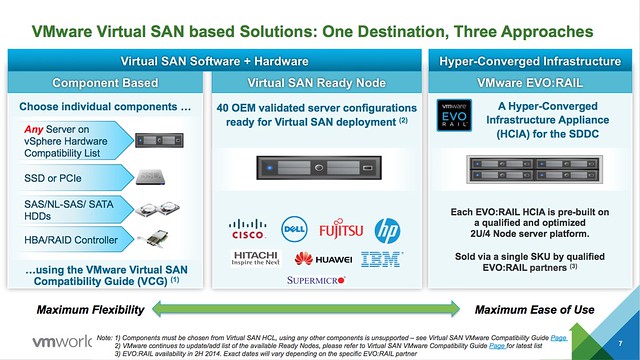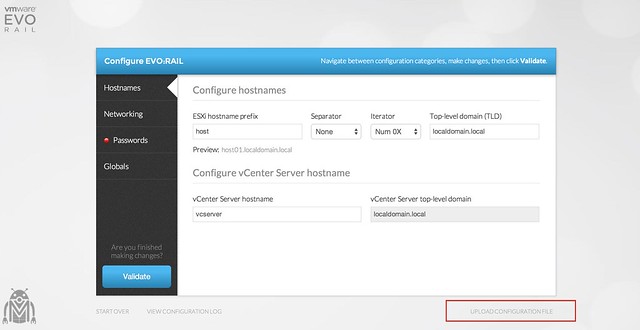EVO:RAIL is awesome! That is typically what I hear from customers when pitching the EVO:RAIL play and showing the config and management demo. Customers are all over it I can tell you. They love the ease of deployment, management, procurement and support… Now, every now and then this geeky person pops up and say: but euuhm, I want more disks and I want to scale per node and all of my configuration stuff is scripted. How will that work with EVO:RAIL?
This is when I show them this slide:

It is a very very valid question to be honest. It is something which I, as a geek, would ask as well. How can I tweak the configuration so that it meets my requirements, and can I just use my own deployment mechanism? Sure you can, but not necessarily with EVO:RAIL. Keep in mind that EVO:RAIL is build using trusted VMware technology like VMware vSphere, vCenter Server, Virtual SAN and Log Insight. Although the EVO:RAIL engine (configuration and management interface) cannot be downloaded separately the components can be. We very much realize that EVO:RAIL may not be a fit for all customers and that is exactly why VMware offers choice as the slide above shows.
If you are a geek, love digging through hardware compatibility lists, like to configure your own servers part by part and have absolute maximum flexibility then option 1 is your best choice. Using the “Component Based” approach you can select your own: Server (vSphere HCL) and then from the VSAN HCL pick your components like the disk controller, SSD and magnetic drives. You get to pick how many drives, which type of flash, how much memory, how many cores per CPU… you name it. Note though, that it does mean you will need to do research to find out which components work well together, what kind of performance you can expect from disk controller x, y or z. But it is doable, many customers have already done this and it will allow you to design to your specific needs. Do note, you will need to configure it yourself and purchase licenses / support.
If you prefer a simpler approach, but still a certain level of flexibility then the “Virtual SAN Ready Node” approach is definitely a great option. It provides you a selection of around 40 different OEM configurations which have been validated by both the OEMs and VMware. Note though that these configurations are typically based on VM configuration profiles and IO profiles. This is mentioned in the Virtual SAN Ready Node list, there are low / medium / high configurations and also two different VDI configurations for each of the different server platforms. If you prefer a pre-validated solution, but need some flexibility then this is the way to go. Again, you will need to install/configure it yourself and purchase licenses / support, but it definitely easier than “component based”.
The third option is “VMware EVO:RAIL“. EVO:RAIL is at the far right of the slider –> Maximum Ease of Use. EVO:RAIL is pre-built on a qualified platform. This means that it comes pre-installed, and can be configured within 15 minutes. It has an easy / simple management interface that allows for easy patching/updating, simple VM creation and management, and even easier automatic scale-out (a couple of clicks). On top of that, it is sold as a single SKU (all licenses and support included) and all support will go through 1 channel. No more being pointed from one vendor to the other, no you contact that single vendor for both support of software as for hardware… Maximum Ease of Use as I said. If this is what you are looking for, EVO:RAIL is what you need.
As you see, when it comes to scale-out server SAN / hyper(visor) converged solutions… VMware offers you maximum choice.
